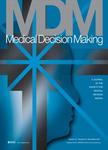版权所有:内蒙古大学图书馆 技术提供:维普资讯• 智图
内蒙古自治区呼和浩特市赛罕区大学西街235号 邮编: 010021

作者机构:Univ Sheffield Sch Hlth & Related Res 30 Regent St Sheffield S1 4DA S Yorkshire England Johns Hopkins Bloomberg Sch Publ Hlth Dept Epidemiol Baltimore MD USA Cincinnati Childrens Hosp Med Ctr Div Asthma Res Cincinnati OH 45229 USA
出 版 物:《MEDICAL DECISION MAKING》 (医疗决策)
年 卷 期:2018年第38卷第8期
页 面:930-941页
核心收录:
学科分类:1204[管理学-公共管理] 1001[医学-基础医学(可授医学、理学学位)] 10[医学]
基 金:National Institutes of Health (NIH) [R21AI101152] UK Medical Research Council [MR/P022081/1] MRC [MR/P022081/1] Funding Source: UKRI
主 题:computational techniques cost-effectiveness decision trees diagnostic algorithms infectious diseases transmission models
摘 要:Introduction. Cost-effectiveness models for infectious disease interventions often require transmission models that capture the indirect benefits from averted subsequent infections. Compartmental models based on ordinary differential equations are commonly used in this context. Decision trees are frequently used in cost-effectiveness modeling and are well suited to describing diagnostic algorithms. However, complex decision trees are laborious to specify as compartmental models and cumbersome to adapt, limiting the detail of algorithms typically included in transmission models. Methods. We consider an approximation replacing a decision tree with a single holding state for systems where the time scale of the diagnostic algorithm is shorter than time scales associated with disease progression or transmission. We describe recursive algorithms for calculating the outcomes and mean costs and delays associated with decision trees, as well as design strategies for computational implementation. We assess the performance of the approximation in a simple model of transmission/diagnosis and its role in simplifying a model of tuberculosis diagnostics. Results. When diagnostic delays were short relative to recovery rates, our approximation provided a good account of infection dynamics and the cumulative costs of diagnosis and treatment. Proportional errors were below 5% so long as the longest delay in our 2-step algorithm was under 20% of the recovery time scale. Specifying new diagnostic algorithms in our tuberculosis model was reduced from several tens to just a few lines of code. Discussion. For conditions characterized by a diagnostic process that is neither instantaneous nor protracted (relative to transmission dynamics), this novel approach retains the advantages of decision trees while embedding them in more complex models of disease transmission. Concise specification and code reuse increase transparency and reduce potential for error.